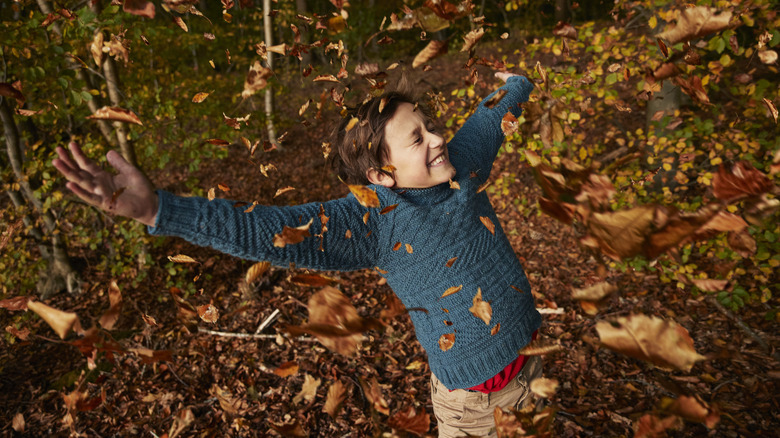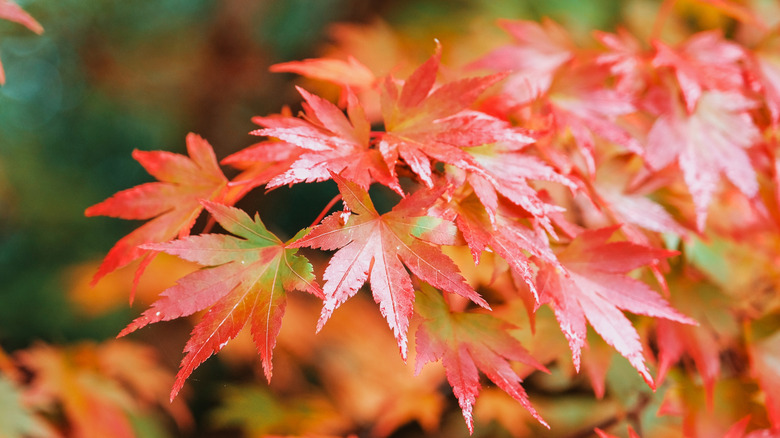The Japanese Maple Tree Variety That Thrives In Sun Or Shade & Looks Stunning In Fall
The vivid red and orange leaves of Japanese maple trees (Acer palmatum) make them a knockout in any landscape, but one cultivar stands out for its eye-catching fall and winter display. Its name, 'Sango-kaku,' means coral tower in Japanese because its red bark resembles coral rising from a reef. This small to medium-sized deciduous tree beautifies any sunny or slightly shady spot in your landscape as an accent or as an integral part of a winter garden.
Low-maintenance 'Sango-kaku' Japanese maples are stars of the garden year-round, though it's their fall and winter features that set them apart from the other trees. In the spring, bright red leaves emerge before turning green for the summer season. The fall foliage is gold with red overtones. Long after your elms and oaks have dropped their leaves and settled in for the winter, the bark and limbs of 'Sango-kaku' remain colorful.
'Sango-kaku' trees grow up to 25 feet tall and spread 15 to 20 feet, making them one of the maple varieties perfect for small yards. Insignificant flowers bloom in the spring and are followed by samaras, the winged maple fruit that little kids call airplanes. They drift to the ground in September and October.
Growing and maintaining Sango-kaku Japanese maples in the landscape
'Sango-kaku', hardy in USDA zones 6 to 8, is tolerant of most soil types but prefers moist, well-drained soil with a high organic content and a pH between 3.7 and 6.8. No matter the soil type, keep it moist but not wet, except during times of drought when the tree should be watered to a depth of one foot. The best way to ensure the water reaches the roots without running off is with a drip line or a soaker hose; either will help you automate your plant watering. Mulching around the base of the tree helps keep moisture in the soil, but to avoid damage to the tree, keep the mulch at least a foot from the trunk. Don't plant 'Sango-kaku' Japanese maple in hot, windy sites. Unlike some other trees, 'Sango-Kaku' rarely needs pruning.
For a red-themed winter garden, plant 'Sango-kaku' with red twig dogwoods (Cornus sericea) and paperbark maple (Acer griseum), a tree with bark that changes color from cinnamon to red to purple. The red fruit of the female winterberry holly (Ilex verticillata) covers the branches in the winter. Add some flowers for a vibrant winter garden. Plant snowdrops (Galanthus) and winter aconite (Eranthis cilicica) under the trees for some very early white and yellow spring flowers.
Japanese maple trees in general have been reported as invasive in some parts of the Northeast and MidAtlantic, a few counties in the Midwest, and one county in Colorado, largely because the trees self-seed and spread rapidly. 'Sango-kaku' is occasionally susceptible to a number of insect pests and diseases, and may suffer from late spring frosts. Soils high in pH may cause chlorosis, or color loss, in the leaves.

